Introduction – Hot Water Baseboard Heaters And Programmable Thermostats
A programmable thermostat is a great way to save money on your utility bill. In the summer, you can program it to cool the house when you’re home and raise the temperature when you’re away. In the winter, you can do the reverse and program it to heat the house when you’re home and lower the temperature when you’re away.
Some programmable thermostats can even be controlled over Wi-Fi. Just be sure to get one that works with your heating and cooling system. Below we discuss hot water baseboard heaters and also the basics of installing a programmable thermostat. We also cover three popular systems.
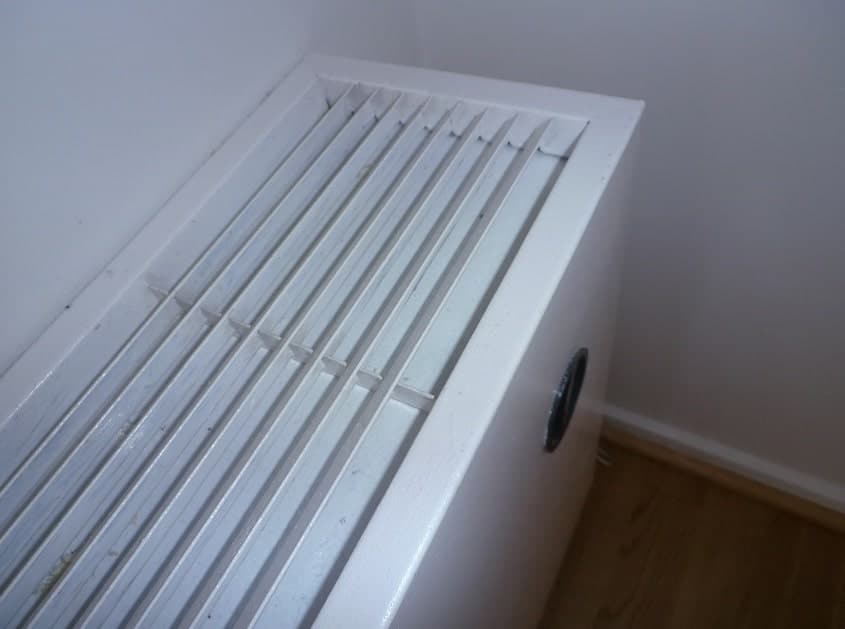
How Hot Water Baseboard Heaters Work
If your home has hot water baseboard heaters, it’s likely that they were installed when your home was built. That’s because, at one time, they were the most popular heating system in the country. Here’s what you need to know about hot water baseboard heaters. Hot water baseboard heaters are hydronic (water based) heating systems. Hot water circulates through pipes within the baseboard and radiates heat into the room.
When the hot water passes through the baseboard heater, the radiator fins release heat via the exposed surfaces. This is a common way to heat a home. The system works like a radiator with the internal heat carrying substance being water that is heated by a gas or oil boiler.
How Hot Water Baseboard Heaters Are Controlled
Hot water baseboard heaters are controlled by a thermostat – recent years have seen many innovations in this space. When the room temperature falls below the set-point, the thermostat activates the heating system. If your home has hot water baseboard heaters, the boiler will have a zone valve control. The zone valve controls the flow of hot water to the baseboards.
Do you have a programmable thermostat for hot water baseboard heat? If not, you should consider getting one. They are a great way to save money on your energy bills, and they are really easy to use. We consider their benefits below and review 3 models.
In this blog post, we will discuss the benefits of programmable thermostats for hot water baseboard heat, and we will recommend some of the best ones on the market.
Programmable Thermostats Work With Baseboard Heat
Most people are familiar with programmable thermostats for central air conditioning and heating systems. However, many homes and businesses use hot water baseboard heat. Individual baseboard heaters are used to warm each room. While these units are very efficient, they can be expensive to operate if they are not properly controlled.
In addition, a programmable thermostat can help to extend the life of your baseboard heaters by preventing them from overworking. As a result, a programmable thermostat can be a wise investment for any home or business that uses hot water baseboard heat.
5 Benefits Of Using A Smart and Programmable Thermostat For Hot Water Baseboard Heat
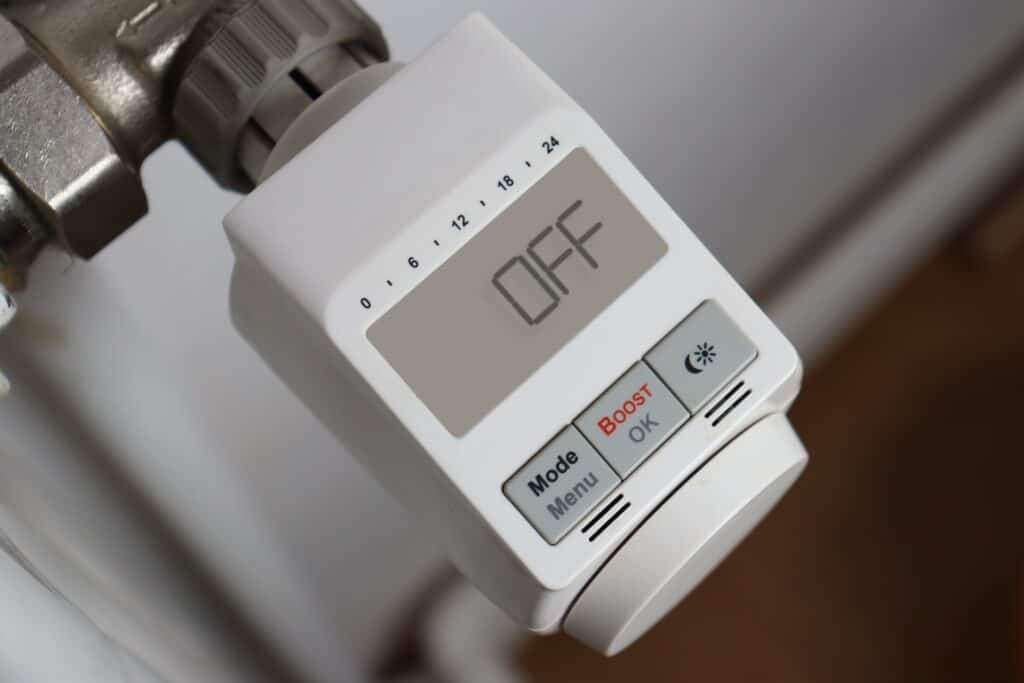
Here are five benefits of using a smart programmable thermostat for hot water baseboard heat:
1. Reduce energy costs
You may cut down on your energy costs by making use of programmable thermostats to set the temperature in your home according to your daily routine. You can use a programmable thermostat to lower the temperature while you’re away, then raise it before your return. As a result, you may be able to cut down on your energy use and monthly expenditures.
2. Improve home comfort
Have you ever come home to a house that’s too hot or too cold? With a programmable thermostat, you can set the temperature of your home to match your preferred level of comfort. This way, you’ll always come home to a comfortable house.
3. Improve heating system efficiency
If your heating system is not running as efficiently as it could be, it could be costing you money. By using a programmable thermostat, you can program your system to run at its most efficient levels, which can save you money on energy costs.
4. Extend life of heating system
Did you know that properly maintaining your heating system can prolong its life? By using a programmable thermostat, you can ensure that your system runs at its optimal level, which can help extend its lifespan.
5. Think less about the heating
Worried about forgetting to adjust the temperature before leaving for work or going on vacation? With a programmable thermostat, you can set it and forget it. This way, you won’t have to worry about whether or not your house is being heated or cooled correctly – the thermostat will take care of everything for you.
5 Best Smart and Programmable Thermostats For Hot Water Baseboard Heat
The best programmable thermostat for hot water baseboard heat will be able to accurately regulate the temperature in your home, even when the outside temperature is changing. Here are some of the best ones:
1. Emerson Sensi Wi-Fi Smart Thermostat For Smart Home
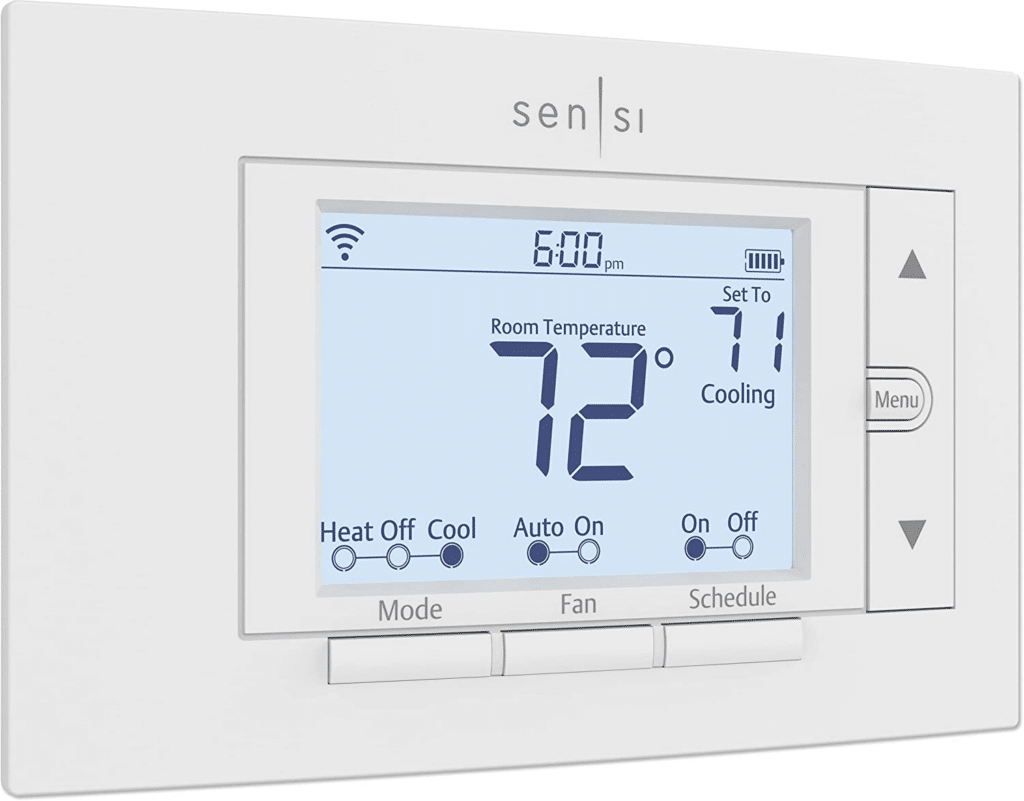
If you use an Emerson smart thermostat, you’ll see that it generates a personalized 7-day program based on your past temperature and routine changes. It is compatible with the air conditioning and heating systems in most houses. Please be aware that a c-wire is needed for heat only, cool, and heating pump functionality. A c-wire is unnecessary for standard heating and cooling systems.
The Emerson Smart Thermostat is Energy Star-certified and can reduce your monthly energy costs by as much as 23%. This is because you can track the usage statistics for your cooling, heating, and fan runtimes all from within the app, giving you a comprehensive picture of your energy consumption and allowing you to make informed decisions about where to make the most savings. After reading and following the instructions, the Emerson Smart Thermostat may be set up in less than half an hour.
2. Honeywell Home RCHT8612WF T5
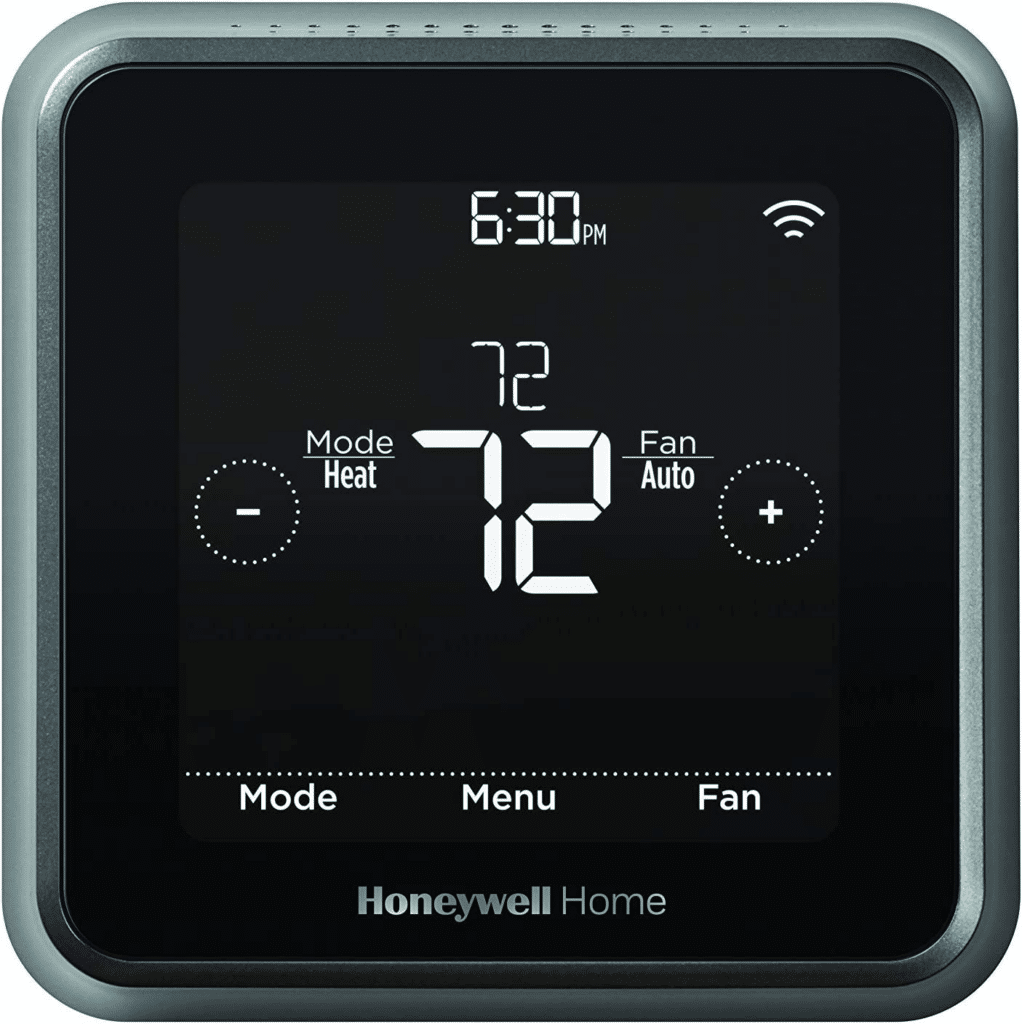
Honeywell Home is notable because it can automatically learn from your changes in temperature and set up versatile 7-day scheduling routines based on your preferences. With the help of Geofence technology, your smartphone can be used to detect when you are at home or away, allowing you to control the temperature accordingly.
If the inside temperature gets too high or the filters need to be changed, you will receive a smart alarm or push message on your phone. The thermostat may be remotely monitored and controlled using either an iOS or Android device and the accompanying software.
If you don’t have access to a C-wire, the thermostat’s included power adapter can be used as a low-voltage replacement. It is simple to install and may be placed near your HVAC units. The thermostat will decide for you whether or not to cool or heat the house.
The Energy Star label attests to the efficiency of the Honeywell Home thermostat. When you install a T5+ Smart thermostat, you may be eligible for rebates from your utility company, which can help the planet and your wallet. Given the extensive set of functionality it offers, the thermostat is surprisingly inexpensive.
A well known Honeywell problem is the “Cool On” blinking which in most cases is innocuous but sometimes reflects a malfunction.
3. Google Nest Learning Thermostat
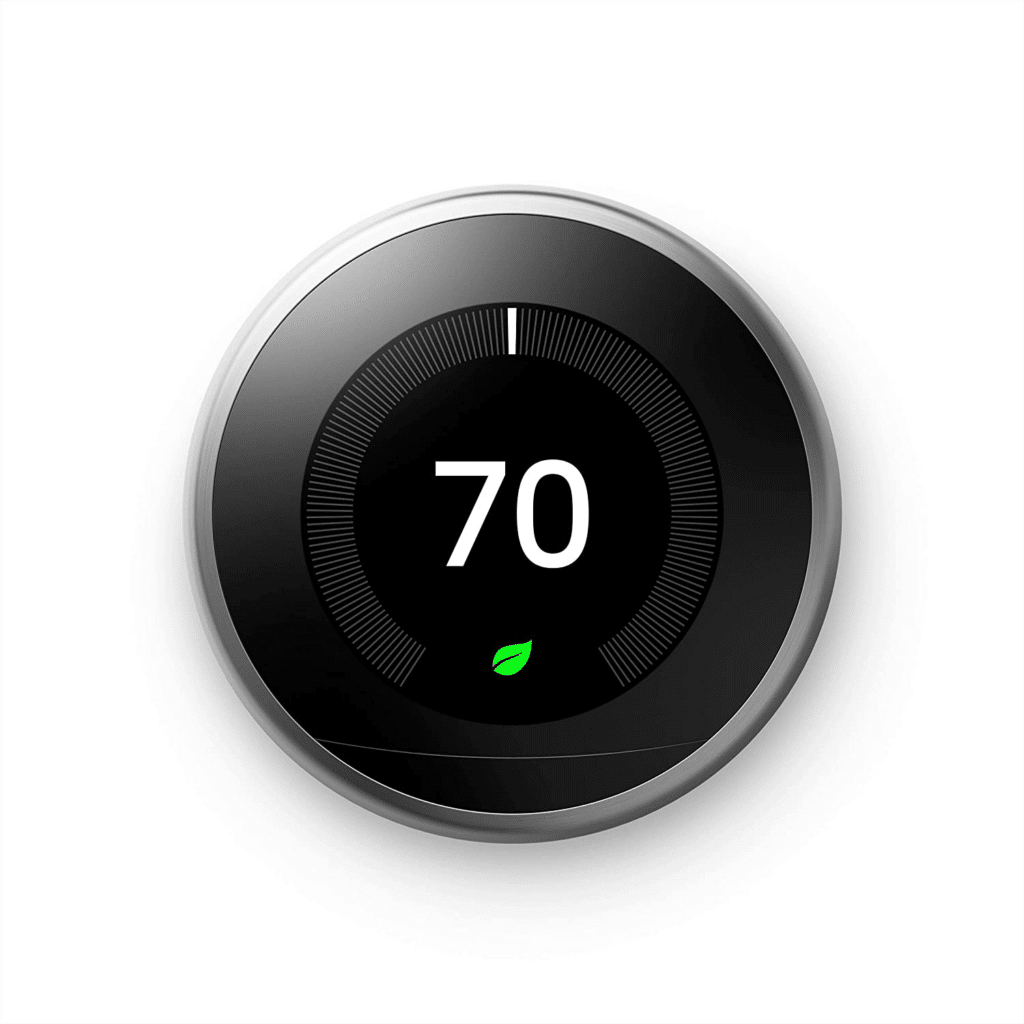
A smart thermostat’s ability to be programmed automatically is a major selling point. This thermostat remembers your preferred temperature settings and automatically establishes a routine for you, eliminating the need to manually alter the temperature every few hours.
The Airwave setting on Nest fine-tunes the approach by exploiting the fact that air conditioning coils remain cool for a few minutes and therefore turning off the compressor, allowing the fans to circulate the remaining cold air, and then shutting down the entire system when the desired temperature is reached.
Whenever you leave your house, this thermostat will immediately change the temperature so that energy is not wasted heating or cooling an empty home. When you walk into a room, the temperature and time display on the thermostat will automatically illuminate. Your mobile device (phone, laptop, or tablet) serves as the system’s remote controller. This ability to precondition the home is called Airwave and is a feature of Nest.
Carbon monoxide detection is a key function of this device. When carbon monoxide levels rise, the thermostat cuts power to the appliance or area that is typically the cause of the problem. Check for the green leaf icon if you’re not sure which setting allows you to reduce energy use. To put it simply, it will point you on the proper course.
Nest Smart Theromstats are extremely popular and ubiquitous. They can be used with hot water baseboard heaters, though Nest does not specifically list them as a compatible heating system on their website. Baseboard heaters are typically controlled by a wall thermostat, which can be replaced with a Nest thermostat. It is important to note that Nest thermostats require a C-wire to work properly, and some baseboard heaters may not have one.
The C-wire is the common wire, and is used to provide power to the Nest thermostat. If your baseboard heater does not have a C-wire, you may be able to install one yourself, or you may need to hire an electrician to do it for you. If you have any questions about whether or not your baseboard heater is compatible with a Nest thermostat, we recommend contacting a Nest Pro installer in your area.
4. Budget Friendly Option – Lux TX9600TS Programmable Large Touchscreen Heating Cooling Thermostat
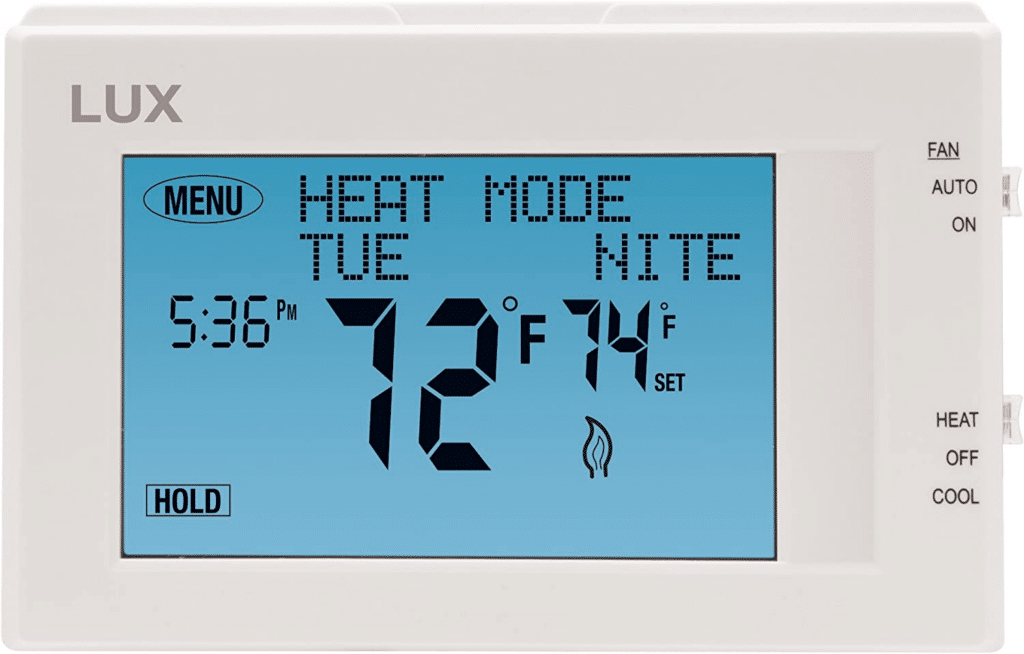
Brands like Lux and Orbit offer affordable options that still come packed with features such as 7-day programming, temporary hold settings, and even some level of smart home compatibility. The Lux TX9600TS Programmable Large Touchscreen Heating Cooling Thermostat, for instance, offers easy-to-use and intuitive programming options, a large lighted display for clear readability, and temporary override features. It might not have all the bells and whistles of a high-end smart thermostat, but it delivers solid performance at a fraction of the cost.
For a balance between cost and functionality, the Lux Products TX9600TS is a great choice in the budget-friendly category. It provides essential programmable features and a user-friendly interface, making it an excellent entry point for those new to programmable thermostats or for those seeking an affordable, functional solution to home temperature control.
5. Bosch BCC100 Connected Control Smart Phone Wi-Fi Thermostat
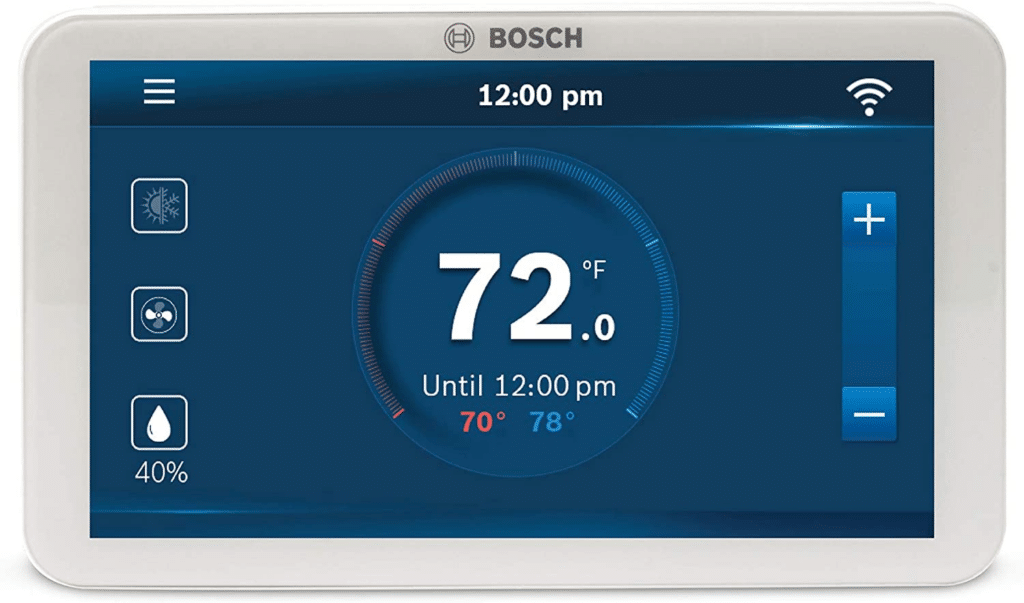
The Bosch BCC100 Connected Control Smart Phone Wi-Fi Thermostat, designed by Bosch Thermotechnology, is a smart and efficient thermostat designed to offer comfort while saving energy. One of its main features is its ability to connect to Wi-Fi, which allows you to control the temperature and settings directly from your smartphone or tablet, making it an Alexa-enabled device. Even when Wi-Fi is not available, it is designed to be fully functional, offering flexibility and reliability in different circumstances.
The thermostat boasts a modern, sleek full-color 5-inch touchscreen display. This feature enhances its usability, enabling easy scheduling and the most comfortable temperature setting for your home from anywhere. This interface is designed to be intuitive, ensuring you can easily manage your home’s heating and cooling settings.
The thermostat is built with a high level of compatibility in mind. It can seamlessly work with heat pump systems (4 Heat, 2 Cool) or conventional (2 Heat, 2 Cool) systems. It can also connect to any 1-wire internally powered humidifier or dehumidifier, as well as most 24 VAC HVAC equipment on the market. This broad compatibility allows for flexibility and adaptability to a wide range of home HVAC systems. However, note that it is not compatible with other Bosch Boiler controls, such as the Logamatic.
Installing A Programmable Thermostat
Installing a programmable thermostat is not too hard. Either read the instructions and follow any applicable building codes, or if you’re uncomfortable working with electricity or your home’s wiring appears incompatible, contact a licensed electrician for help. Here we present a rough guide which will not work for every device but provides the high level outline of the 4 steps you need to take. We provide no guarantee these are the right instructions. The rough guide below is not going to match your set up exactly. In fact, we highly recommend that you get a professional to do this. Unless you’re very practiced in appliance wiring, the things you see will likely confuse you.
1. Remove the old thermostat

To start, turn off your old unit and the furnace/AC breaker. Next, remove the cover and thermostat, and label where the wires are connected. The letters are what’s important in step 2 below, not the colors. Take a picture for reference. The example above shows “W”, “Rc”, “G”, and “Y” wires. Disconnect the wires and remove the mounting screws and plate. Tape the wires to the wall to keep them from falling inside the hole. Use a piece of tape to mark each wire with the corresponding letter. Many old thermostats contain mercury. Call your local recycling center for disposal instructions.
Let’s say your new unit won’t line up with the existing holes – you need to remove the anchors and repair the drywall.
2. Put in the new thermostat
Now you’re ready for the new thermostat. Check your owner’s manual for specific steps. Typically you attach the plate first. Hold it in place—level—and mark the mounting holes. Drill the holes and tap in wall anchors. Pull the wires through and attach the plate with screws. Next, reconnect the wires—if you don’t have both R and Rc wires, leave the metal jumper. Wi-Fi units such as the Emerson Wi-Fi and old Google Nest need an additional C wire.
3. Connect wiring to furnace
The C wire provides a constant source of 24 V power to enable the programmable thermostat to have power. If your house doesn’t have a C wire, and you’re not hooking up an HVAC, connect the G wire to the C terminal on the unit, then connect the other wires. At the furnace, move the G to the C terminal, and install a short jumper, which you can make from 18-gauge wire, from the Y to G terminal. This method will not allow you to control the fan. The new Google’s Nest Thermostat E contains a rechargeable lithium-ion battery which eliminates the need for a C wire.
4. Turn on the power
You will need to put batteries into the new thermostat, snap the cover on, and turn on the power. Follow the included instructions for set up and connecting your Wi-Fi. Well, you’re on your way to saving money, and energy.
Conclusion
While there are several options for hot water baseboard thermostats on the market today, the three discussed here are the top picks. They will help you save money on utilities. They can also provide you with a plethora of conveniences that will enhance your quality of life. If you want to get the most out of your new thermostat, you should make sure it works with your home automation assistant and smartphone.
